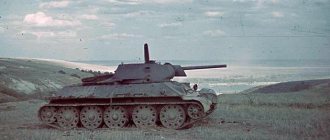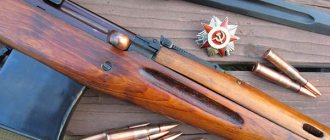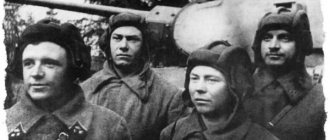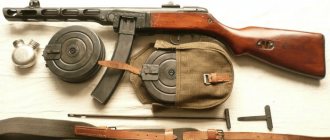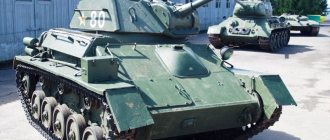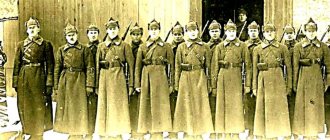“Modern war will be a war of engines,” said Soviet leader Joseph Stalin in January 1941. And so it turned out. Most of these engines came not from airplanes, tanks and warships, but from vehicles specially manufactured or mobilized for the needs of the front. But Military Motorist Day is celebrated in Russia on May 29 not in honor of this, but in memory of the first automobile company created by decree of Nicholas II in 1910.
Article on the topic Born before the revolution. What were cars capable of 100 years ago?
Ours and not ours
By June 22, 1941, the Red Army had 272.6 thousand vehicles. However, the losses in the first months of the war were so great that even with the mobilization of 30 thousand cars from the national economy in September, the shortage amounted to 20.3 thousand cars.
It was replenished in different ways. During the war years, domestic industry produced 154.4 thousand new domestic cars for the front and rear. Another 411.8 thousand cars were delivered to the USSR under Lend-Lease from the USA, Great Britain and Canada. This is according to data from the US State Department. According to Soviet data, there were 100 thousand fewer Lend-Lease cars. But this figure is still twice as much as what the Soviet automobile industry was capable of. In defense of the latter, it should be said that some USSR automobile factories throughout the war produced light tanks and self-propelled guns based on them. What models of Soviet and foreign cars, which bore all the hardships of the Great Patriotic War, went down in history?
Frontline ambulance
On the basis of GAZ-MM, the Soviet ambulance bus GAZ-55 was produced. Obviously, the wounded cannot be transported from the battlefield by truck. The victims needed special transport. This is how a special bus with soft springs and a good ride appeared, compared to trucks. It could transport people lying on stretchers. You could sit on folding benches. The cabin had a heater and ventilation system.
The ambulance bus has become indispensable on front-line roads. He did not jump or swerve over potholes and was gentle with his passengers. He was affectionately called “front-line ambulance.”
Top 5 USSR
"Lortorka" (GAZ-MM)
7 facts about the “Lortorka” - the legendary Soviet truck More details
This small and outdated truck 10 years before the war made up half of the Red Army’s vehicle fleet throughout the war. Being “in its maidenhood” the American “Ford-AA” model of 1927, the GAZ-MM underwent some simplification at the Gorky Automobile Plant. After the start of the war, the right headlight, rear-view mirror, bumper, muffler, as well as the horn and front brakes disappeared from the car. The cabin became wooden. It was in this form that the “one and a half” most often walked along the “Road of Life” in the first winter of the siege of Leningrad. From there in the winter of 1941-1942. they took out up to half a million people. On the front line and in the rear, the GAZ-MM didn’t carry or tow anything! It is on the “one and a half” that in Vladimir Bogomolov’s novel “The Moment of Truth” the SMERSH task force, led by Captain Alekhine, travels around Western Belarus. The total circulation of this truck, including pre-war production, exceeded one million copies.
- Engine power - 50 l. With.
- Maximum speed on the highway - 70 km/h
- Load capacity - 1.5 t
- All-wheel drive: No
Trekhtonka (ZIS-5)
ZIS-5 model 1933. Photo: Commons.wikimedia.org/Sah68
The second most popular Soviet truck after the lorry. Only at the Moscow Plant named after. Stalin (ZIS) 571,199 of these cars were produced. They were also built in Miass and Ulyanovsk. Like the GAZ-AA, the ZIS-5 was of American origin. Since the early twenties, the now almost forgotten Autocar Company assembled cheap trucks from components from other companies for various countries in South America. In 1928, the Soviet government entered into an agreement with her to purchase technical documentation for the Dispatch SA truck. The screwdriver assembly was organized at the Moscow Automobile Plant AMO. By 1933, these trucks, which had managed to become completely “Russianized” in terms of spare parts, were already produced at the renamed ZIS.
Many modifications were built on the basis of the ZIS-5: ZIS-8 (city bus), ZIS-11 (truck tractor), ZIS-19 (dump truck), etc. At the front, “Zakhar Ivanovich,” as the drivers called him, towed guns , carried the wounded and cargo, worked as a firefighter and a gas station attendant. Anti-aircraft machine guns and searchlight installations were mounted in its body.
- Engine power - 73 hp. With.
- Maximum speed on the highway - 60 km/h
- Load capacity - 3 tons.
- All-wheel drive: No
ZIS-6, the first Katyusha carrier
BM-13 “Katyusha” guards jet mortar on the chassis of a three-axle (6x4) ZIS-6 truck. Photo: Commons.wikimedia.org/ ChrisO
Soviet three-axle off-road truck, created on the basis of the ZIS-5 truck. From December 1933 to October 15, 1941, 21,239 copies were produced at the I.V. Stalin Automobile Plant, after which production was discontinued and never resumed.
Front-line soldiers remembered the ZIS-6 for its very good maneuverability. And also - as the first carrier of the BM-13 guards mortars. In order to meet the needs of the front, three-axle trucks had to be requisitioned from the national economy. Also, the first Soviet radar RUS-2, a radio station, a tanker, a mobile power station, a searchlight, a sound detector, etc. were mounted on the ZIS-6 chassis.
- Engine power - 73 hp. With.
- Maximum speed on the highway - 55 km/h
- Load capacity - 4 t
- All-wheel drive: Yes
GAZ-64, the first jeep of the USSR
GAZ-64. Photo: Commons.wikimedia.org/ Liftarn
At the end of 1940, the Main Armored Directorate of the Red Army heard rumors that the US military department was going to purchase as many as 30 thousand small but cheap off-road vehicles. Somewhere they even got hold of a photograph of one of the first American jeeps. In short, the military pointed a finger at it and said: we want the same one. At the GAZ plant, drawings were drawn in less than 2 months... By the end of 1941, 600 cars were produced.
In the army, the “goat,” as he was nicknamed, served as a reconnaissance vehicle, towing light guns, and a command vehicle. He was loved for his unpretentiousness and maintainability. Unfortunately, not many GAZ-64s in the basic version were built before the end of the war. Since the spring of 1942, BA-64 armored vehicles began to be built on its basis. But all current Russian jeeps are descendants of the GAZ-64.
- Engine power - 50 l. With.
- Maximum speed on the highway - 100 km/h
- Load capacity - 250 kg.
- All-wheel drive: Yes
"Emka" (GAZ M-1)
"Emka" - the first Soviet passenger car
In the literature of the 1930s and 40s, the car was usually called simply "M-1" or "M1", without any mention of the manufacturer's name in the designation. It stood for “Molotovsky-first”, in honor of the head of the USSR government, Vyacheslav Molotov, whose name was borne by the Gorky Automobile Plant in those years. RIA Novosti / Vladimir Astapkovich
The Ford Model B 40A Fordor Sedan of the 1934 model, with a four-cylinder engine and standard design, was chosen as a prototype for production in the USSR. Commons.wikimedia.org/Sicnag
The documentation for the car was transferred to GAZ by the American side under the terms of the contract. The Soviet side had to prepare the new model for production and create part of the production equipment on its own. RIA News
The adaptation of the foreign model to Soviet operating conditions was carried out by a team of engineers under the leadership of Andrei Lipgart. Commons.wikimedia.org / Sergey Rodovnichenko
The first prototypes of the M-1 appeared in January 1934. In mass production, the car replaced the GAZ-A in 1936. Commons.wikimedia.org / RIA Novosti archive/Alexander Krasavin
On March 16, 1936, the first two production cars rolled off the assembly line of the Gorky Automobile Plant, and on May 20, their mass production began, amounting to 2,524 cars by the end of 1936. RIA News
The main innovation of the car was the all-metal body (initially with a wooden side beam of the roof and its covering made of leatherette), the advanced manufacturing technology of its time was mastered by the plant in cooperation with the bodybuilding division of Ford. Commons.wikimedia.org / Museum of Russian Military History
The bulk of the cars were painted black with a narrow red stripe along the side. This is exactly how the example stored in the GAZ factory museum is painted, for example. www.globallookpress.com
The metal parts of the car's interior were finished to resemble expensive types of wood, and the interior itself was upholstered in gray or brown woolen cloth. Commons.wikimedia.org / Museum of Russian Military History
GAZ-64
GAZ-64
The all-wheel drive GAZ-64 can be called, without exaggeration, the Soviet analogue of the American military SUV Willys MB. The GAZ-64 was produced from 1941 to 1943 and was originally intended for command personnel, but was often used to transport infantry. The car was equipped with an inline 4-cylinder 3.3-liter GAZ-MM engine from the truck of the same name. The engine power was 50 horsepower, which was enough to accelerate the GAZ-64 to 100 km. / h.
"Emka" - the first Soviet passenger car
In the literature of the 1930s and 40s, the car was usually called simply "M-1" or "M1", without any mention of the manufacturer's name in the designation. It stood for “Molotovsky-first”, in honor of the head of the USSR government, Vyacheslav Molotov, whose name was borne by the Gorky Automobile Plant in those years. RIA Novosti / Vladimir Astapkovich
The Ford Model B 40A Fordor Sedan of the 1934 model, with a four-cylinder engine and standard design, was chosen as a prototype for production in the USSR. Commons.wikimedia.org/Sicnag
The documentation for the car was transferred to GAZ by the American side under the terms of the contract. The Soviet side had to prepare the new model for production and create part of the production equipment on its own. RIA News
The adaptation of the foreign model to Soviet operating conditions was carried out by a team of engineers under the leadership of Andrei Lipgart. Commons.wikimedia.org / Sergey Rodovnichenko
The first prototypes of the M-1 appeared in January 1934. In mass production, the car replaced the GAZ-A in 1936. Commons.wikimedia.org / RIA Novosti archive/Alexander Krasavin
On March 16, 1936, the first two production cars rolled off the assembly line of the Gorky Automobile Plant, and on May 20, their mass production began, amounting to 2,524 cars by the end of 1936. RIA News
The main innovation of the car was the all-metal body (initially with a wooden side beam of the roof and its covering made of leatherette), the advanced manufacturing technology of its time was mastered by the plant in cooperation with the bodybuilding division of Ford. Commons.wikimedia.org / Museum of Russian Military History
The bulk of the cars were painted black with a narrow red stripe along the side. This is exactly how the example stored in the GAZ factory museum is painted, for example. www.globallookpress.com
The metal parts of the car's interior were finished to resemble expensive types of wood, and the interior itself was upholstered in gray or brown woolen cloth. Commons.wikimedia.org / Museum of Russian Military History
The most popular passenger car of the pre-war USSR was also the most popular front-line command vehicle. Being an American Ford model B in origin, the Emka was built at the Gorky Automobile Plant named after. Molotov. Hence the letter “M” in the name. Most army "emoks" served as command or staff vehicles in the rifle regiments of the Red Army. According to the pre-war staffing schedule, the regiment's transport roster included one M-1 passenger car. The rifle division was entitled to 19 “emoks”, and before the start of the war there were 198 of these divisions in the Red Army. These same cars served in district and divisional newspapers. So it was only a matter of time before “emka” entered mainstream literature. Here’s Konstantin Simonov’s poem “Correspondent Table”: “But on a tattered Emka and with one revolver, we were the first to enter the cities.”
- Engine power - 50 l/s
- Maximum speed on the highway - 105 km/h
- Load capacity - 500 kg.
- All-wheel drive: No
GAZ-67
GAZ-67
The military all-wheel drive SUV GAZ-67, produced from 1943 to 1953, is, in fact, a modernized GAZ-64.
The car was equipped with an in-line 4-cylinder 3.3-liter GAZ-64-6004 engine with a power of 54 horsepower and had a maximum speed of 90 km. / h. The main differences between the GAZ-67 and the GAZ-64 include a wider track, a reinforced frame and the presence of an additional fuel tank with a volume of 33 liters. Externally, the GAZ-67 was not very different from the GAZ-64, which is why many people confuse these cars. Did you like the post? Share!
BA-27
The first mass-produced Soviet armored vehicle was the BA-27. It was developed in 1927 on the basis of the chassis of the domestic AMO-F-15 truck. The armored car could accelerate to a speed of 40 kilometers per hour. It was a mixed machine-gun and cannon armored car. A cannon was installed on it, which was used to suppress enemy firing points and armored targets. During the Nazi attack on the Soviet Union, these vehicles were among the first to engage enemy tanks. Due to large losses in armored vehicles, BA-27s were used to replenish tank units. Most of them were knocked out by German tanks and only a few survived to the Victory.
